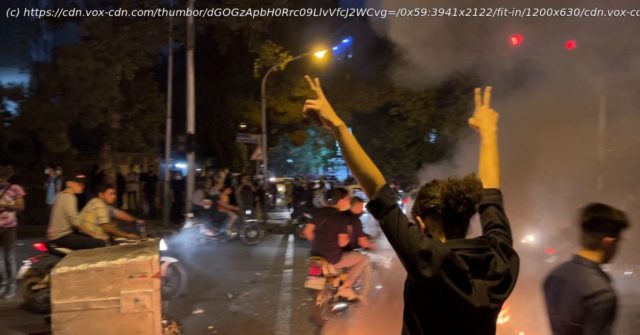Why Iranian women are risking everything by burning their hijabs.
It was not an isolated incident of police violence in Iran. But the death of 22-year-old Mahsa Amini in police custody last week has captured the country’s attention.
Amini was visiting the capital of Tehran, coming from the Kurdish province in the country’s northwest, and Iran’s so-called morality police detained her, allegedly for wearing the mandatory headscarf improperly. Several hours after entering police custody, she was in a coma. She died two days later. Iranian police claimed she died after a stroke and suffering cardiac arrest, but witnesses say she died after sustaining blows to the head, and shocking photos that spread online of Amini intubated in a hospital have galvanized the nation.
Protesters have since taken to the streets in more than 50 cities across Iran. Authorities reportedly have killed as many as 36 people during demonstrations. The government has also restricted the internet, so the complete picture may not be available. But the growing arrests of human rights defenders, activists, and journalists are particularly troubling.
Demonstrators have defied the repressive government regularly in the past several years, often expressing economic grievances. Women have been central to Iranian politics of resistance since the 1979 revolution, and before. What’s different about these protests is the diversity of people out on the streets and the widespread nature of Iranian resistance, in cities big and small.
The government may weather the emerging movement. Or Amini’s tragedy could prove to be Iran’s Mohamed Bouazizi — the Tunisian street-seller who self-immolated in December 2010 and helped catalyze the mass protests across the Middle East and North Africa that came to be the Arab Spring.
Across the country, protesters are chanting, “Woman, Life, Freedom.” Those words have resonated deeply because they’re affirmative and unifying, says University of Sussex professor Kamran Matin. “This triangular slogan is uniting different strands of discontent in Iran,” he told me. “This slogan has united every section of Iranian society which has some sort of grievance against the government.”Why Iranian women are burning headscarves
In response to Amini’s death, Iranians are demanding an end to mandatory hijab laws and burning the scarves in powerful displays of refusal. In Tehran, they have been chanting, “We don’t want forced hijab.”
That’s connected to the police’s purported reason for detaining Amini, but the act of protest carries multiple meanings. Negar Mottahedeh, a professor of gender and feminist studies at Duke University, likened the images of Iranian women burning their headscarves to the bra-burning of the 1960s. Bra-burning meant many things at once: an expression of feminism and liberation, but also a broader rejection of the Vietnam War and of capitalism. Similarly, the images from demonstrations across Iran over the last week object to compulsory veiling and the morality police, but also against a paranoid, controlling state that has sought to police women’s bodies.
The so-called morality police, an independent unit that has been around since 1979, don’t only enforce headscarves but a variety of regulations, including mixed-gender gatherings and prohibitions against drinking alcohol. During the late 1990s when Mohammad Khatami was president, Iran instituted a number of reforms, but his successor, Mahmoud Ahmadinejad, reversed these.






